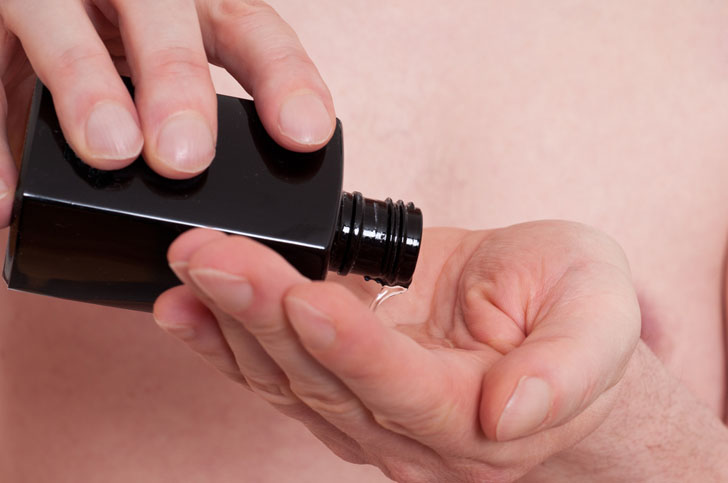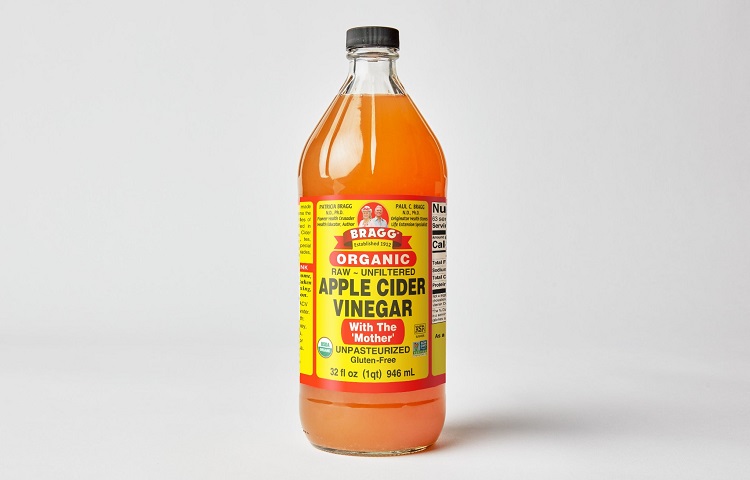CONTENTS

Shaving is one of those tasks that men have a wide range of feelings about.
While some love the feeling of a freshly shaved face, others would prefer to let it grow long and free like a wildflower.
Regardless of whether shaving is loved or hated, a daily or weekly event, one thing is certain and almost ritualistic, which is aftershave.
Originally, the purpose of aftershave was an antiseptic; however, nowadays, it serves a number of purposes. Aftershave was initially used to keep cuts from getting infected.
However, with modern razors and electric shavers, cuts are less prevalent now than they were before. So aftershave as an antiseptic is not as urgent today as it was in the past.
Lots of men prefer to use an astringent as an aftershave because it prevents infection and also opens up pores to prevent acne.
While aftershave is readily available in many stores, there’s nothing quite like making your own aftershave that is perfectly suited to the unique needs of your skin.
How Do You Make Homemade Aftershave?

Creating your own aftershave is more economical; however, the bonus is that you can tailor it to your own personal needs and style.
Commercial aftershaves are heavily scented for the comfort of most men; however, when you create your own, you can make the scent as light or as heavy as you like.
Your skin is also unique, and this means it needs a unique blend of ingredients that are all tailored to the type of skin you have.
Lately, men are becoming more aware of the number of additives and chemicals contained in their hygiene products such as shampoo, conditioner, and antiperspirant.
Therefore, men are becoming more interested in the idea of creating their homemade aftershave and natural products.
Some men want an astringent, a scented astringent, or a moisturizing aftershave. There’s always some basic ingredients, and you need to know what they do and how they work before starting.
Most of the ingredients are relatively inexpensive and readily available. So you can easily whip up a batch, see how you like it, and tweak it until it suits your needs.
Eventually, you’ll be able to create a concoction that meets your own personal and customized needs.
What Can I Use As A Natural Aftershave?
Depending on your skincare routine, using aftershave may or may not be a necessary process.
Aftershave gives you a sense of accomplishment and designed to mark the end of the shaving process. It also leaves skin refreshed, toned, and cool.
Some commercial aftershaves, however, tend to have an overpowering scent, and this tends to put en off.
There are, however, some pure and natural alternatives that you can use, which have the same soothing effect and are also readily available.
So here are some natural aftershave alternatives:
Apple Cider Vinegar

When Apple cider vinegar is diluted in water, it acts as an aftershave lotion. By mixing equal parts of apple cider vinegar with water and applying it to the skin, it brings soothing relief after you shave.
The smell can tend to be a bit heavy, so you may want to combine it with some essential oils.
An essential tip is that you should create the mixture a few days in advance.
Store it for about four or five days in a cool dark place and make sure that you shake the jar before you use it. Use a soft cotton ball to apply it to the skin.
If you’re not sure if your skin is going to take to the apple cider vinegar mixture, try it over the weekend so you can see how it’s going to turn out.
So ensure that you take your time and test it to see exactly how your skin takes to it before deciding to use it.
Alcohol
One of the most effective ways to clean your face after shaving is by using alcohol. You shouldn’t splash it since it can get into your eyes, but you should apply it easily by dabbing it onto your face.
One of the disadvantages of this natural alternative is that it tends to dry the skin quickly, so you should dilute it in water and use a hydrating cream afterward.
Water
It may sound a little obvious, and weird to lots of people to use water, given that you use it anyway to wash away what’s left of the shaving cream.
However, water is an important step in the shaving process. It is recommended that you wash your face with warm water so it can open up the pores and wash away any impurities that’s left after shaving.
Then you should wash your face with cold water to close the pores.
So the good news is that washing with warm water opens up your pores and releases impurities while the cold water closes your pores so that bacteria cannot get into them.
Ultimately, using water as an aftershave would improve the overall health and appearance of the skin.
Alum

Alum was initially used as an antiseptic and constricting agent by the ancient Egyptians.
You should rub a little bit of the substance on wet skin and leave for two minutes, so it can take care of damaged skin and nicks.
The disadvantage with Alum as is the case with alcohol is that it tends to dry the skin out so you should always apply moisturizer after using the Alum.
What Ingredients Can You Use In Homemade Aftershave
Creating homemade and natural aftershave is a matter of using a few base ingredients.
The good news is that they are inexpensive and readily available.
Astringents And Antiseptics
Witch Hazel
For decades, Witch Hazel has been used as an astringent to help open up pores and tighten skin. You can use it as an aftershave on its own or use a scent in it.
Alcohol
Alcohol works as an excellent antiseptic aftershave. Rubbing alcohol or even drinking alcohol works.
Since alcohol evaporates quickly, you’ll likely be smelling like a liquor store in a few minutes. Try experimenting on the weekends, so you don’t run the risk of bumping into your boss.
Zest
Lemon, orange, and grapefruit rinds contain antiseptic and toning properties, and the bonus is they have a great scent.
If you don’t want an overbearing scent, then balance it out with the herbs recommended.
Scents
Essential Oils

Essential oils add a tasteful scent to aftershave, and many of them have great health qualities in themselves.
Some great masculine scents are spearmint, rosemary, patchouli, sandalwood, bay, cypress, Oakmoss, black pepper, ginger, vanilla, and vetiver.
Alternatively, if you don’t want a heavy scent, feel free to use a lighter scent like Ylang-Ylang and experiment until you come up with your own unique blend.
Herbs
Helps bring a zesty aroma to your aftershave. Feel free to drop them in the bottle and grind them up before blending them into a balm.
Some great herbs are chamomile, rosemary, sage, lavender, cinnamon, ginger, bay leaves, cloves, and mint and thyme.
The fresher the herbs, the more aromatic it will be. So consider going to the grocery store and using fresh herbs or even try growing your own.
Flower Essences
While most people associate flower scents with women, scents like rosewater have been used by men throughout history.
Lots of flowers do not contain that lighten, fresh scent generally associated with women and therefore bring a delicate balance or counterpoint to some of the heavier herb scents like clove and rosemary.
Moisturizers
Aloe Vera
A gel-like substance that comes from the aloe vera plant is aloe-gel. Buying your own plant is the best idea if you want to get fresh aloe vera.
Alternatively, you can purchase 100% pure aloe vera gel. Aloe is excellent for soothing razor burn and bumps. It can also be used as a mild moisturizer for oily and combination skin.
Glycerin
Glycerin attracts moisture to your skin, which means it is a natural humectant.
It makes a great base aftershave since it is a suitable solvent, and most ingredients dissolve better in glycerin than in water or alcohol.
However, when diluted with water, it softens your skin, making it an excellent moisturizer.
Shea Butter
This is probably the best moisturizer if you have dry skin. It’s high in vitamin E and mimics the sebaceous oils found naturally in the skin.
For best results, use high-quality and fresh shea butter from reputable sources.
Step By Step Guide For Making Your Own Aftershave
Step One
Start by choosing your main astringent. This is basically the substance that shrinks tissues and, in this case, the pores.
The stringent is an important part of the aftershave since most people use warm water to shave, and this opens up the pores, and by using an astringent, it will close up the pores.
Step Two
In this step, you need to choose a secondary astringent. Since the main astringent may be too hard on the skin, the second astringent is more a mollifying agent, and when paired with the main astringent offsets the stinging sensation.
Step Three
Next, you need to choose an emollient, which is the substance that softens and moisturizes your skin. It is also known as mineral oil.
Step Four
Step four is where you need to decide if you want to put in a styptic pencil. This is any substance that, when applied to the skin, staunches bleeding.
If you are prone to nicks and cuts, this step is recommended.
Step Five
In step five, you need to add fragrances or essential oils. This is a great way to fragrance aftershaves. Some examples of essential oils are eucalyptus, lavender, and citrus oils.
Once you add all the ingredients, be sure to give the jar a good shake and probably leave the aftershave to sit for approximately 4 to 5 days before using it.
Conclusion
You probably heard the saying that clothes make the man, however nice aftershave doesn’t hurt either.
The bad news is that most store-bought brands contain heavy fragrances and chemicals that some people don’t want to slather on their faces.
The good news is that you can take more control out of what comes in contact with your skin by investing in a small amount of ingredients and whipping up a batch of your own natural aftershave.


